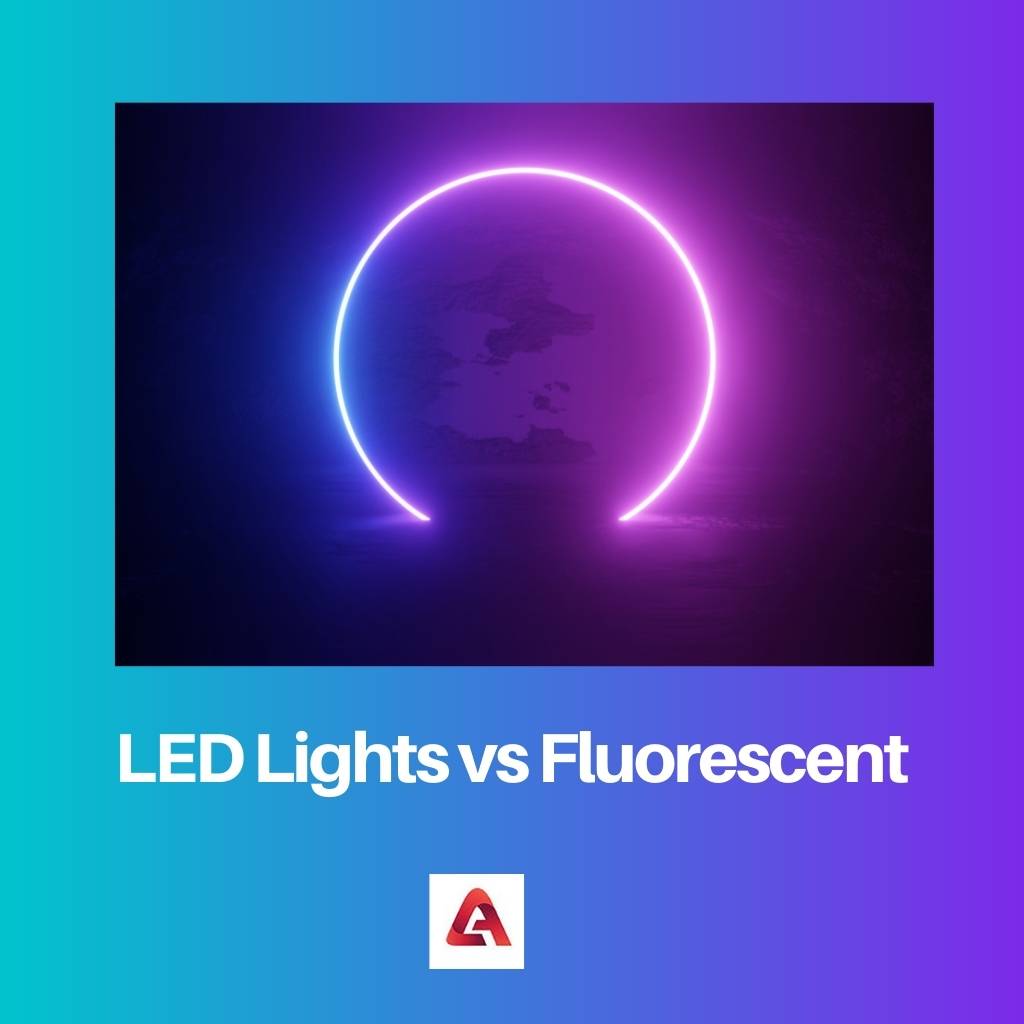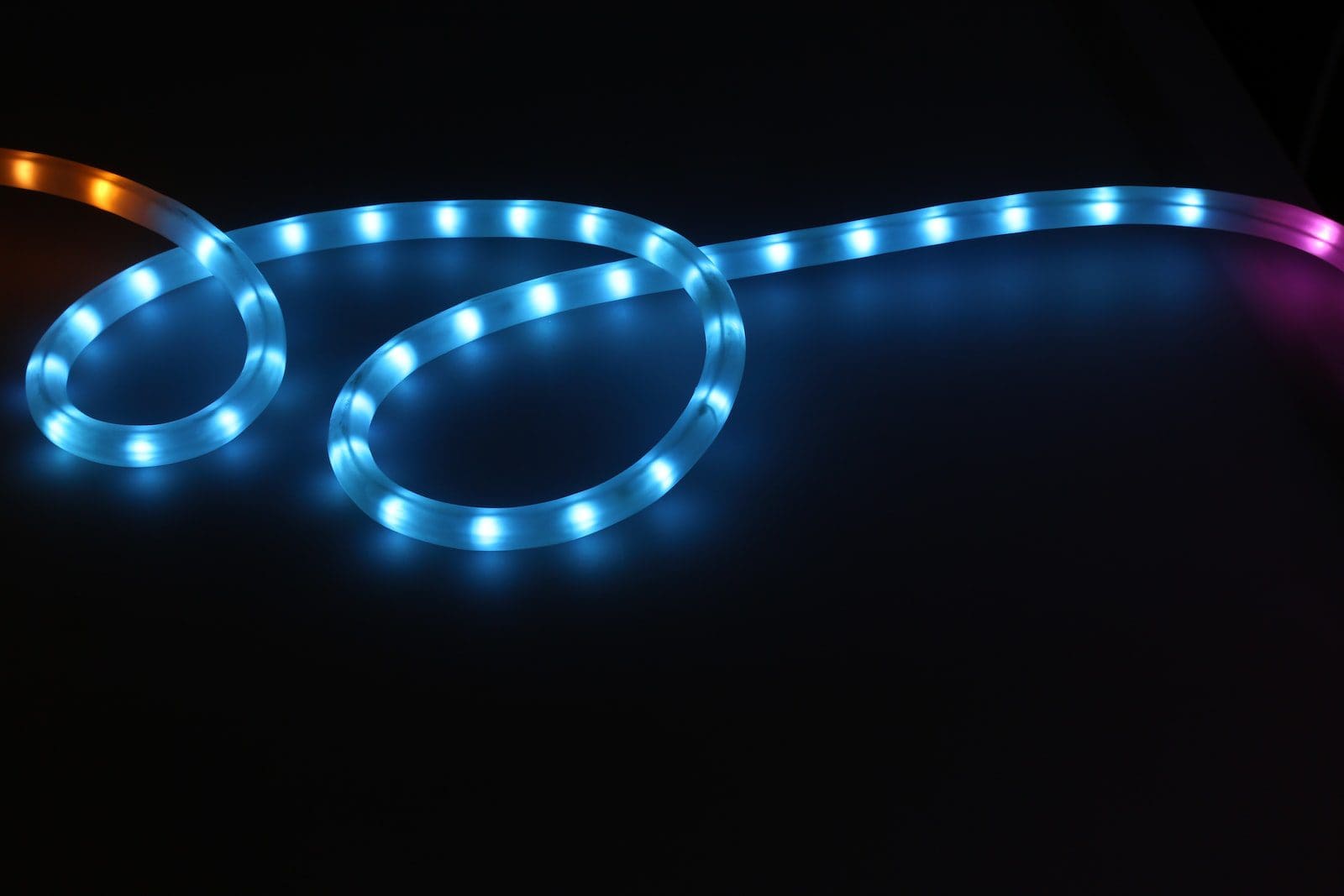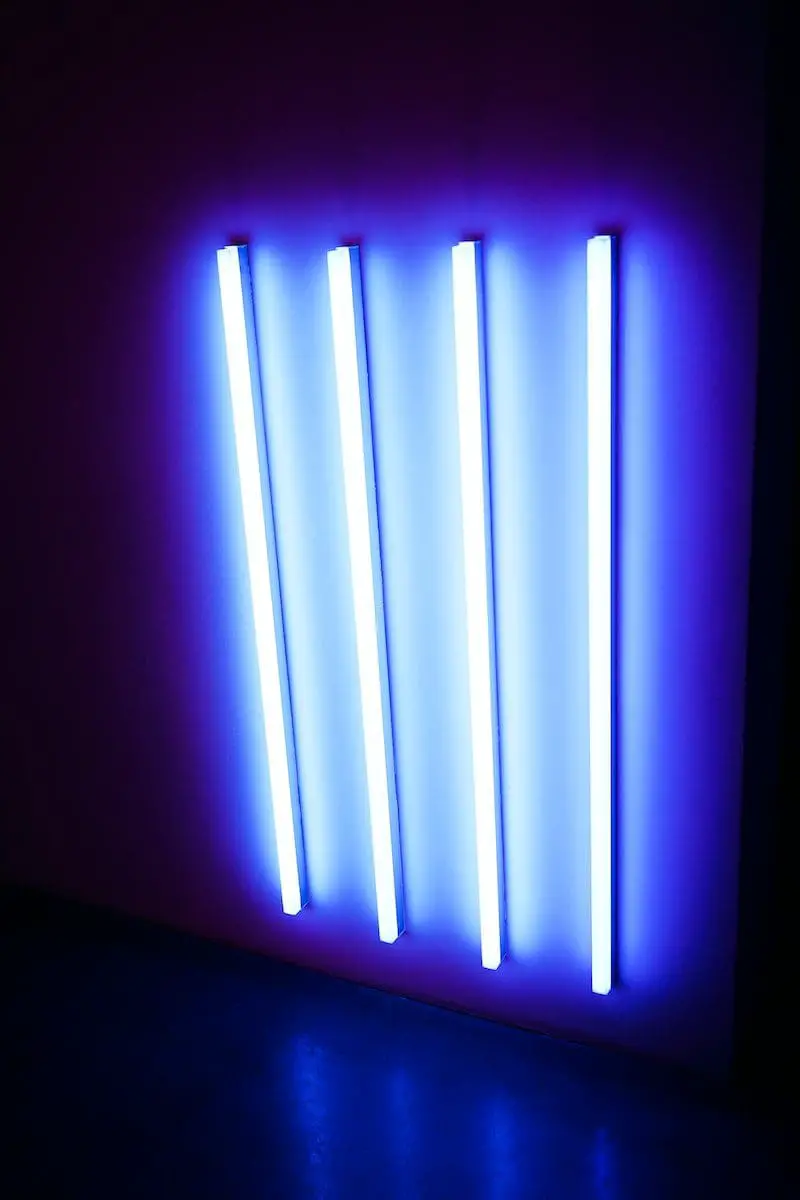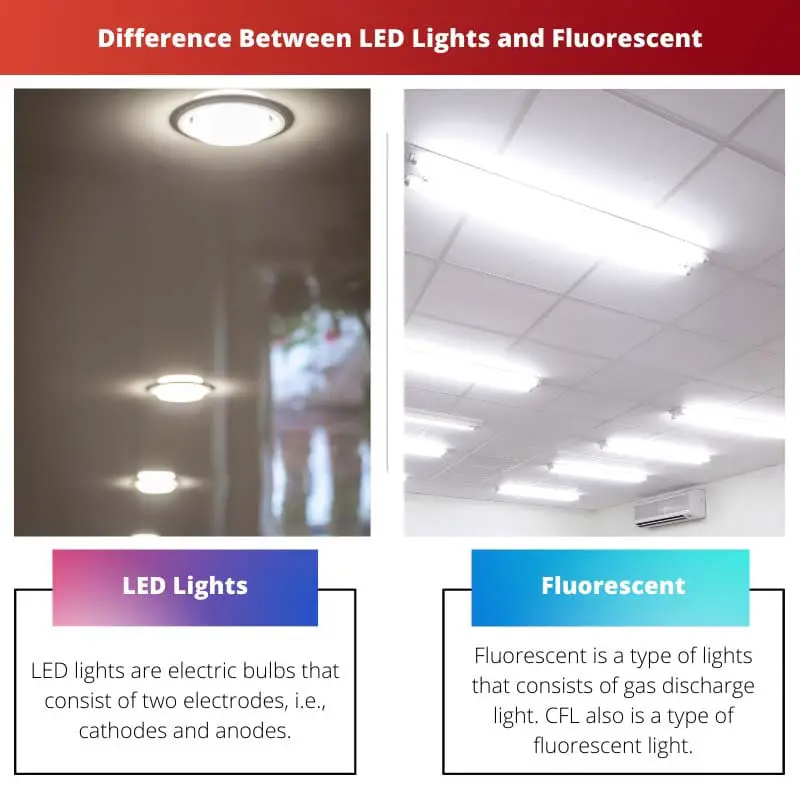Lights or illumination are used for aesthetic purposes. Lights are both artificial as well as natural. Natural lights, also called daylight, are used in shelves, windows etc., to capture energy so that they can be used in the nighttime.
Lights are used to enhance the performance of a task, provide psychological effects etc. Artificial lights include lighting fixtures such as LEDs, Fluorescence, Incandescent, CFL, Tubelights etc.
Key Takeaways
- LED lights are more energy-efficient and longer-lasting than fluorescent lights.
- LED lights emit less heat than fluorescent lights and are available in a wider range of colors.
- Fluorescent lights are cheaper than LED lights but may contain hazardous materials and emit UV radiation.
LED Lights vs Fluorescent
LED lights (Light Emitting Diodes) are a type of lighting technology that is highly energy-efficient and has a longer lifespan, producing light when an electrical current passes through them. Fluorescent lights use a chemical reaction involving gases and mercury vapour to create light, requiring more energy and offering a shorter lifespan.

LED Lights or also called electric lights. LED means it is a light-emitting diode. LED produces lights using these diodes only. LED lights are more efficient, and they save a lot of energy. LEDs are equal to Incandescent lamps.
Their life span is very long. LED lights give full brightness, and it doesn’t warm up also. The market for LED lights has grown tremendously and has become a billion-dollar industry. It was developed in the 1960s.
Fluorescent are lights that absorb light through electromagnetic radiation. It is a form of luminescence. Fluorescent lights have a longer wavelength, but their light is very low. Energy is also very low.
The process of fluorescence happens when UV lights are absorbed. Fluorescence substances can only be seen in ultraviolet lights. It has many applications in our practical life like it is used in medicine, gemology, cathode ray tube, vacuum displays, dyes, mineralogy etc.
Comparison Table
| Parameters of Comparison | LED Lights | Fluorescent |
|---|---|---|
| Costs | It is expensive concerning other lights. | It is cost-effective. |
| Lifespan | It can last up to 50,000 hours. | It can last up to 10,000 hours. |
| Efficiency | It is extremely efficient and hassle-free. | It emits UV lights and contains mercury. |
| Direction | It is one-directional. | It is omnidirectional. |
| Applications | It is used in signs, traffic lights, indoor and outdoor lighting etc. | It is used in medicine, gemology, cathode ray tube etc. |
What is LED Lights?
LED lights are electric bulbs that consist of two electrodes, i.e., cathodes and anodes. In LED, electricity flows in only one direction from the anode to the cathode. LED lights are solid-state technology, and it emits electromagnetic radiation.
Unlike Fluorescent, it doesn’t absorb UV lights and waste energy. LEDs are energy efficient, adaptable, and have a very long life of up to 50,000 hours to 1,00,000 hours. They also provide high-quality lights. However, they are expensive with regard to other lightning options.
But their maintenance cost is very low and is hassle-free. LEDs require very few accessories, and they can also be designed in a variety of colours like blue, green, red etc., unlike conventional lighting of yellow colour. They emit light at 180 degrees.
LED lights are much smaller and don’t warm up easily, regardless of how you switch them on or off. LED lights are perfect to use because they respond instantly.
It is very easy to dim LED lights, and their brightness continues. It produces a very small amount of visible light. It is shocking resistive, which means damaging LED bulbs/lights is very difficult.
It has a cold tolerance of -40 degrees Celsius and a heat tolerance of 100 degrees Celsius. It has a warranty of about 5 to 10 years. It is commonly used in schools, gymnasiums, road lighting, traffic lights, lighted signs, computer circuit boards, etc.

What is Fluorescent?
Fluorescent is a type of light that consists of gas discharge light. CFL also is a type of fluorescent light. It stands for compact fluorescent light. Fluorescent contains tubes inside it and mercury as well.
They are longer and bigger in comparison to LED lights. It emits light by releasing UV light, which is generated by the electrical charge inside the tube. Fluorescent light only consists of an electrode, and it requires ignition.
It requires a lot of voltage if fluorescent bulbs are larger in size. It requires a warm-up period as it doesn’t start instantly or rapidly. To counter voltage in fluorescent flights, it has a ballast to balance.
As it becomes old and ages, fluorescent light requires more and more voltage, and it dims with time. It is very less efficient. Fluorescent lights have been there for almost 100 years, and it is very efficient for covering lighting in vast area as it is omnidirectional.
It is cost-effective, but maintenance charges are very high. The phenomenon of fluorescence was first observed by Bernardino de Sahagún in the year 1560. Many natural compounds emit fluorescent lights, such as greeneye, firefly, anglerfish etc.
Fluorescent lights are more energy-efficient when compared to incandescent lights. It was first made available in 1939, and since then, it is improving with longer life, better phosphors, easy-to-use shapes and consistent internal discharge.

Main Differences Between LED Lights and Fluorescent
- LED lights are expensive concerning other lights but have low maintenance. Fluorescent is cost-effective and has high maintenance.
- LED lights can last up to 50,000 hours to 1,00,000 hours. Fluorescence can last up to 10,000 hours.
- LED lights are extremely energy efficient, have no warm-up system and are hassle-free. Fluorescent emits UV lights and contains poisonous mercury, and is not energy efficient.
- LED lights are one-directional, i.e. 180 degrees. Fluorescent is omnidirectional and spreads light over a vast area.
- LED lights are used in signs, traffic lights, indoor and outdoor lighting etc. Fluorescent is used in medicine, gemology, cathode ray tube etc.



